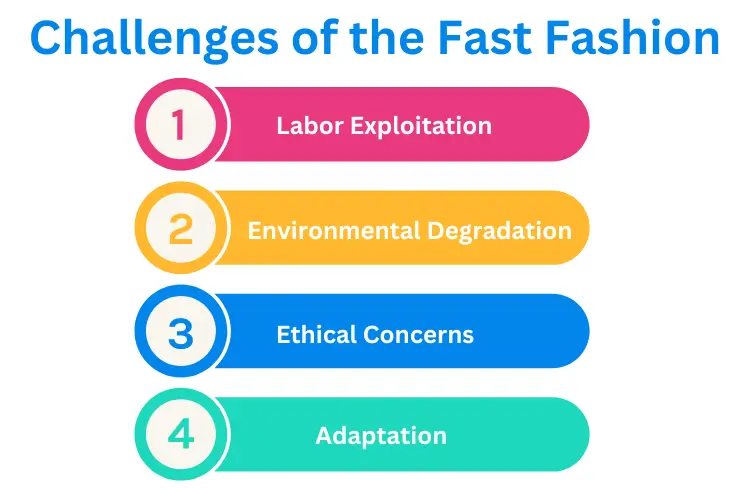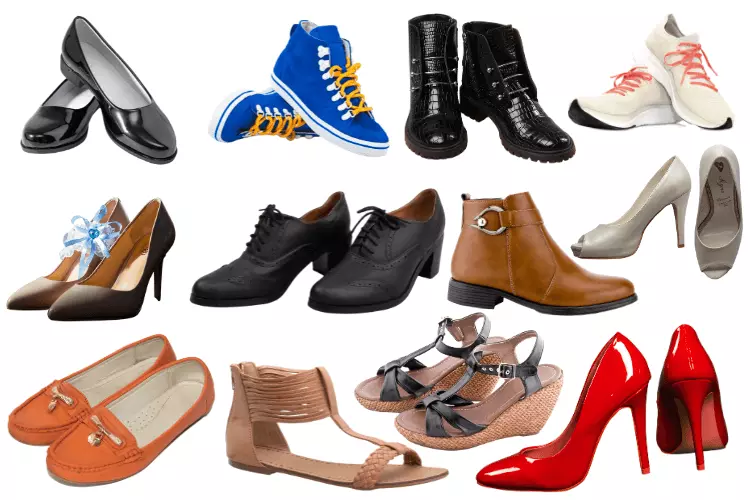Fast fashion has revolutionized the fashion industry, reshaping the way we shop for clothing and the pace at which trends emerge and evolve. With its rapid production cycles, trend-driven designs, and accessible pricing, fast fashion has skyrocketed in popularity, becoming a dominant force in the global fashion landscape. In this article, we delve into the business strategies and processes that underpin the success of fast fashion brands. From Zara to H&M, these brands have mastered the art of delivering trendy clothing at lightning speed, captivating consumers with their ability to stay ahead of the fashion curve.
Join us as we explore the intricate workings of the fast fashion business model, uncovering the secrets behind its rapid rise to prominence and its enduring appeal to fashion-forward consumers worldwide. From supply chain optimization to agile production methods, we’ll dissect the strategies and processes driving the success of fast fashion brands and examine the implications for the future of the fashion industry.
Understanding the Fast Fashion Business Model
Fast fashion has revolutionized the fashion industry, redefining how consumers engage with trends and reshaping the traditional retail landscape. In this section, we’ll delve into the fundamentals of the fast fashion business model, exploring its definition, key characteristics, and core components.
Definition of Fast Fashion
Fast fashion is a dynamic and responsive approach to clothing retailing characterized by its ability to quickly produce and distribute trendy garments at affordable prices. Unlike traditional fashion cycles that operate on a seasonal basis, fast fashion brands continuously introduce new collections inspired by the latest trends, allowing consumers to stay current with ever-changing fashion preferences.
Key Characteristics of Fast Fashion
- Rapid Production Cycles: Fast fashion brands excel at streamlining production processes to bring new designs from concept to market in record time. This agility enables brands to respond swiftly to emerging trends and consumer demand, ensuring a constant flow of fresh inventory.
- Trend Replication: Fast fashion retailers closely monitor fashion trends from runways, street styles, and social media platforms, quickly replicating popular styles and making them accessible to a wide audience. By capitalizing on trend replication, these brands cater to fashion-conscious consumers seeking the latest looks without the high price tags.
- Affordable Pricing Strategies: One of the hallmarks of fast fashion is its ability to offer trendy clothing at competitive prices. By optimizing supply chains, minimizing production costs, and leveraging economies of scale, fast fashion brands make fashionable apparel accessible to a broader demographic, democratizing style in the process.
Overview of the Fast Fashion Business Model
The success of fast fashion hinges on a multifaceted business model that encompasses several key components:
- Production: Fast fashion brands prioritize speed and efficiency in their production processes, often outsourcing manufacturing to countries with lower labor costs. By embracing agile manufacturing techniques and minimizing lead times, brands can quickly bring new designs to market and capitalize on fleeting trends.
- Distribution: Efficient distribution channels are essential for fast fashion brands to ensure that products reach consumers in a timely manner. These brands invest in advanced logistics and inventory management systems to optimize distribution networks, enabling seamless replenishment of stock and timely delivery of orders.
- Marketing: Fast fashion retailers employ dynamic marketing strategies to create buzz around new collections and engage with their target audience. From social media campaigns to influencer partnerships, these brands leverage various channels to amplify their brand message and drive consumer engagement.
- Retailing: With a blend of physical stores and online platforms, fast fashion brands provide a multi-channel retail experience designed to meet the diverse needs of modern consumers. Through sleek storefronts, immersive shopping environments, and user-friendly e-commerce interfaces, these brands aim to enhance the overall customer experience and foster brand loyalty.
Strategies Driving Success in Fast Fashion
Fast fashion brands have achieved remarkable success by implementing strategic initiatives aimed at driving rapid growth and profitability. In this section, we’ll examine the core strategies employed by these brands, including trend forecasting, supply chain optimization, and agile production processes.
Trend Forecasting: One of the key strategies driving success in fast fashion is trend forecasting. Fast fashion brands invest heavily in market research, trend analysis, and consumer insights to anticipate upcoming fashion trends accurately. By staying ahead of the curve, these brands can introduce trendy designs that resonate with their target audience, thereby driving demand and increasing sales.
Supply Chain Optimization: Supply chain optimization is another critical strategy adopted by fast fashion brands to streamline operations and enhance efficiency. These brands prioritize agility and flexibility in their supply chains, leveraging technology and data analytics to optimize sourcing, production, and distribution processes. By minimizing lead times, reducing costs, and improving inventory management, fast fashion brands can respond quickly to changing market dynamics and consumer preferences.
Agile Production Processes: Agile production processes are central to the success of fast fashion brands. These brands embrace lean manufacturing principles and flexible production techniques to accelerate the product development cycle. By maintaining close collaborations with suppliers and manufacturers, fast fashion brands can expedite the production of new designs and bring them to market in a matter of weeks. This agility enables brands to capitalize on emerging trends and seize market opportunities swiftly.
Analysis of Key Business Tactics
- Trend Forecasting: Fast fashion brands utilize sophisticated trend forecasting tools and techniques to identify emerging fashion trends and consumer preferences. By analyzing data from sources such as social media, fashion shows, and street styles, these brands can anticipate future trends and align their product offerings accordingly.
- Supply Chain Optimization: Fast fashion brands optimize their supply chains to enhance efficiency, reduce costs, and improve responsiveness. By implementing advanced logistics and inventory management systems, these brands can minimize lead times, streamline distribution processes, and ensure the timely delivery of products to stores and customers.
- Agile Production Processes: Fast fashion brands embrace agile production processes to accelerate the product development cycle and bring new designs to market quickly. By maintaining close relationships with suppliers and manufacturers, these brands can expedite production and respond rapidly to changes in consumer demand and market trends.
By leveraging these key business tactics, fast fashion brands can achieve rapid growth and profitability in today’s dynamic retail landscape. However, it’s essential for brands to remain mindful of the ethical and environmental implications of their operations and work towards adopting more sustainable practices for the future.
Processes and Operations in Fast Fashion
Fast fashion brands operate through a series of intricately coordinated processes and operations, encompassing every stage from design conception to product delivery. In this section, we’ll provide a detailed insight into the operational framework of fast fashion, highlighting the role of technology, data analytics, and global supply chains in facilitating efficient operations.
Design Conception: The journey begins with design conception, where creative teams draw inspiration from a variety of sources, including runway trends, street styles, and consumer preferences. Designers collaborate closely to develop concepts and sketches for new collections, focusing on innovation, creativity, and market relevance.
Product Development: Once designs are finalized, the product development process begins. Fast fashion brands leverage advanced technologies such as computer-aided design (CAD) software and 3D modeling to transform concepts into tangible prototypes. Prototyping allows for rapid iteration and refinement, ensuring that final designs meet quality standards and consumer expectations.
Sourcing and Production: Sourcing raw materials and manufacturing garments are integral components of the production process. Fast fashion brands maintain extensive networks of suppliers and manufacturers, often located in countries with lower labor costs. By leveraging global supply chains and economies of scale, these brands can procure materials and produce garments cost-effectively and efficiently.
Supply Chain Management: Efficient supply chain management is paramount to the success of fast fashion brands. These brands utilize advanced logistics and inventory management systems to monitor inventory levels, track shipments, and optimize distribution networks. Real-time data analytics enable brands to forecast demand accurately, minimize stockouts, and ensure timely delivery of products to stores and customers.
Technology and Data Analytics: Technology and data analytics play a pivotal role in driving operational efficiency and decision-making in fast fashion. Brands leverage data analytics tools to analyze consumer behavior, identify trends, and forecast demand. Predictive analytics enable brands to anticipate future market trends and adjust production schedules accordingly, minimizing excess inventory and maximizing sales opportunities.
Global Supply Chains: Global supply chains form the backbone of fast fashion operations, enabling brands to source materials and manufacture products on a global scale. These supply chains are characterized by their complexity, spanning multiple countries and involving numerous stakeholders. Fast fashion brands collaborate closely with suppliers and manufacturers to ensure transparency, compliance, and ethical sourcing practices throughout the supply chain.
Challenges and Criticisms of the Fast Fashion Business Model
While fast fashion has revolutionized the fashion industry, it has also faced significant scrutiny and criticism due to various challenges and ethical concerns. In this section, we’ll discuss the key challenges associated with the fast fashion business model, including labor exploitation, environmental degradation, and ethical concerns, as well as examine how fast fashion brands respond to these criticisms and adapt their business practices.
Labor Exploitation: One of the most prominent criticisms of the fast fashion industry is its reliance on cheap labor in developing countries, where workers often face low wages, poor working conditions, and limited labor rights. Sweatshops and labor exploitation have been documented in many fast fashion supply chains, raising ethical concerns about worker welfare and human rights violations.
Environmental Degradation: Fast fashion is also criticized for its significant environmental impact, including resource depletion, pollution, and waste generation. The production of textiles and clothing involves the use of large quantities of water, energy, and chemicals, contributing to pollution of air, water, and soil. Additionally, the fast fashion model promotes disposable fashion, leading to excessive consumption and landfill waste.
Ethical Concerns: Ethical concerns encompass a range of issues, including animal cruelty, cultural appropriation, and the use of harmful chemicals in garment production. Fast fashion brands have been criticized for exploiting cultural symbols and designs without proper attribution or respect for indigenous cultures. Moreover, the use of fur, leather, and other animal-derived materials in fashion products raises ethical questions about animal welfare and sustainability.
Response and Adaptation by Fast Fashion Brands: In response to these criticisms, fast fashion brands have taken various steps to improve their practices and address ethical concerns. Many brands have implemented codes of conduct and ethical sourcing policies to ensure compliance with labor standards and environmental regulations. Additionally, some brands have invested in sustainable materials, renewable energy, and eco-friendly production processes to reduce their environmental footprint.
Moreover, transparency and accountability have become increasingly important for fast fashion brands, with many companies publishing sustainability reports and disclosing information about their supply chains and manufacturing practices. Collaborations with ethical fashion initiatives, certification programs, and non-profit organizations have also become common, demonstrating a commitment to responsible business practices.
Despite these efforts, challenges remain, and the fast fashion industry continues to face scrutiny and calls for greater accountability. Achieving true sustainability and ethical practices in the fast fashion industry will require ongoing collaboration, innovation, and commitment from brands, consumers, and stakeholders across the supply chain.
Future Trends and Innovations in the Fast Fashion Industry
As the fast fashion industry continues to evolve, it is essential to anticipate future trends and innovations that will shape its trajectory. In this section, we’ll explore emerging business models and sustainability initiatives that seek to address the shortcomings of traditional fast fashion practices and pave the way for a more sustainable and ethical future.
Anticipation of Future Trends:
- Digital Transformation: The rise of digital technologies, including artificial intelligence (AI), augmented reality (AR), and virtual reality (VR), is expected to revolutionize the way consumers engage with fashion. Virtual try-on experiences, personalized styling recommendations, and immersive shopping environments will become increasingly prevalent, enhancing the online shopping experience and driving sales.
- Circular Economy: The adoption of circular economy principles, such as product reuse, recycling, and waste reduction, will become more widespread in the fast fashion industry. Brands will focus on extending the lifespan of garments through repair, resale, and rental programs, promoting a more sustainable approach to consumption.
- Slow Fashion Movement: As consumers become more conscious of the environmental and social impact of their fashion choices, the slow fashion movement will gain momentum. Slow fashion emphasizes quality over quantity, artisanal craftsmanship, and timeless designs, encouraging consumers to invest in durable, ethically-made clothing that transcends seasonal trends.
Exploration of Emerging Business Models:
- Rental and Subscription Services: The rise of rental and subscription-based models will disrupt traditional retailing and encourage a shift towards access over ownership. Brands will offer clothing rental services and subscription boxes, providing consumers with access to a rotating wardrobe of fashionable items without the commitment of purchasing.
- Direct-to-Consumer (DTC) Brands: Direct-to-consumer brands will continue to gain traction, bypassing traditional retail channels and establishing direct relationships with consumers. By cutting out intermediaries, DTC brands can offer high-quality, affordable products while maintaining greater control over pricing, distribution, and brand messaging.
- Collaborative Consumption Platforms: Collaborative consumption platforms, such as peer-to-peer resale marketplaces and clothing swapping communities, will become increasingly popular as consumers seek alternative ways to access fashion. These platforms promote sustainability by extending the lifespan of garments and reducing waste through shared ownership and exchange.
Sustainability Initiatives:
- Material Innovation: Innovations in sustainable materials, such as plant-based fabrics, recycled fibers, and biodegradable textiles, will drive progress towards a more sustainable fashion industry. Brands will prioritize eco-friendly materials in their product development processes, reducing reliance on conventional materials with high environmental impact.
- Supply Chain Transparency: Greater transparency and traceability in supply chains will become essential for building consumer trust and accountability. Brands will invest in blockchain technology and supply chain monitoring tools to track the origins of materials, ensure ethical sourcing practices, and verify compliance with labor and environmental standards.
- Regenerative Fashion Practices: Regenerative fashion practices, which focus on restoring ecosystems and biodiversity through sustainable agriculture and regenerative farming techniques, will gain momentum. Brands will partner with farmers and producers to implement regenerative practices in their supply chains, promoting soil health, carbon sequestration, and biodiversity conservation.
By anticipating future trends and embracing innovative business models and sustainability initiatives, the fast fashion industry can transition towards a more ethical, sustainable, and resilient future. Collaboration, innovation, and commitment from brands, consumers, and stakeholders across the supply chain will be essential in driving this transformation forward.
Conclusion: Shaping the Future of Fashion
In conclusion, our exploration of the business model behind fast fashion has provided valuable insights into the dynamics and complexities of this influential industry. We’ve examined the rapid production cycles, trend replication strategies, and agile supply chains that drive the success of fast fashion brands like Zara and H&M. Moreover, we’ve delved into the operational processes, technological innovations, and sustainability initiatives that are reshaping the future of fashion.
Fast fashion’s business model has undeniable implications for both the fashion industry and society as a whole. On one hand, it has democratized fashion, making trendy clothing accessible to a broader audience and empowering consumers to express their individuality through style. However, the relentless pursuit of fast fashion has also led to environmental degradation, labor exploitation, and ethical concerns that cannot be overlooked.
As we look to the future, it’s imperative for the fashion industry to embrace sustainability, transparency, and ethical practices to address the shortcomings of traditional fast fashion models. By prioritizing quality over quantity, investing in innovative materials and production processes, and fostering a culture of responsible consumption, we can build a more ethical, equitable, and sustainable fashion ecosystem for generations to come.
In closing, the evolution of fast fashion presents both challenges and opportunities for the fashion industry and society. By harnessing the power of innovation, collaboration, and conscious consumerism, we can shape a future where fashion is not just about what we wear but also about how we wear it and its impact on the world around us.





